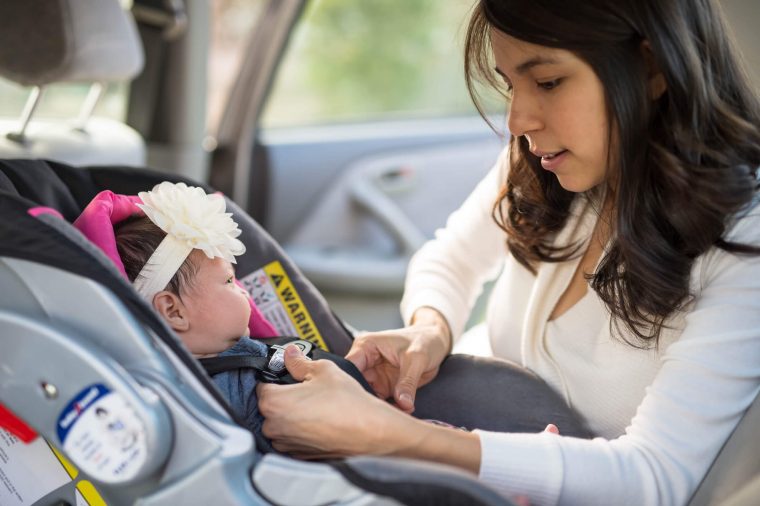During the months leading up to your baby’s birth, there are a number of things you can prepare for that are sure to fill you with excitement. From buying their first clothes and blankets to finding the perfect baby car seat in which you will take your child for a ride. Every step will be special and memorable.
In this article, we will focus on providing you with some recommendations for purchasing a car seat for your little one.
Which is the best baby car seat for my child?
There is no one option that is best or safest for all children. It is best to choose a baby car seat depending on the size and weight of your little one. The seat must adapt to your car and you must learn how to install it correctly and use it properly whenever your baby is with you.
Now, if you are considering a secondhand baby car seat, it is important that you ask these questions to whoever sells it to you, for example:
- When was it produced? Once you have that information, ask the company that made it how many years they recommend its use. In case the owner does not remember the date, you will surely be able to see this information on the label.
- Is it missing any parts? Although it may seem that some parts don’t affect the operation of the chair, it is best to always check with the manufacturer.
- Has it been in a car crash? Although baby car seats can sometimes function after a minor accident, some experts recommend replacing them.
Once you have an answer to these questions, evaluate which is the best option for your little one taking into account all the options available to you.
Now let’s talk about some general tips that can be very helpful as your baby grows.
How do I use the baby car seat?
Each baby car seat has different characteristics. Therefore, before using the one you purchased, read the user manual and research as much as possible about its use. Of course, there are some general suggestions that can serve as a guide.
- Make sure your baby travels for as long as possible in a rear-facing car seat and does not exceed the weight or height limit indicated by the manufacturer. In general, these types of seats can be used for 2 years or more.
- When your little one exceeds the recommended measures for the rear-facing seat, you can opt for a forward-facing car seat and harness. Most of these options work until your child weighs approximately 65 pounds (29.5 kg).
- When they reach the mentioned weight, it is time to switch to a booster seat until the seat belt adjusts to the size of your child. This generally happens when they reach 4,5 ft (1.40 m).
- It is recommended that if your child is under 13 years old, they should always travel in the back seat of your car.
In the next section, we will answer some frequently asked questions about baby car seats.
FAQ about baby car seats
It is normal to have some doubts about the use of a baby or infant car seat. Don’t worry! In this part of the reading, you will find some answers.
What should I do if my baby’s feet hit the back of the seat?
Your little one can easily bend their legs and be comfortable, so don’t worry! You don’t have to make any changes yet. Leg injuries in young children are rare when riding in rear-facing seats.
Do I need a special car seat for my premature baby?
The most important thing about this question is that your premature baby complies with the indicated weight to use the car seat. Very small babies tend to sit well in rear-facing seats in a semi-reclined position. Try to do some tests while they are still in the hospital to confirm they fit in the car seat.
In case your baby needs to lie down, you can purchase a car bed that meets the safety standards for your vehicle.
What can I do if my baby slides down or sideways in the car seat?
Try arranging some rolled-up blankets around your child’s sides. Also, some manufacturers suggest wrapping a diaper or piece of cloth around the crotch safety clip to prevent babies from slipping down.
It is not recommended to add any type of padding behind your baby or to use accessories added to the car seat that are not specially designed for the chair.
Can my child wear a coat when they’re in the baby car seat?
In general, some bulky garments can contract in an accident and loosen the straps that hold your baby in place. Therefore, it is advised to dress children with light layers of clothing when they’re in their baby car seat and, once they have the straps on, cover them with a blanket or coat.
What’s the difference between booster car seats that have a backrest and those that don’t?
Both options are safe and have the same function: to raise your child so that the seat belt protects them correctly. However, seats that have a back are generally used in cars that do not have headrests or that have low backrests.
Also, consider that backless booster seats are usually cheaper and can be moved more easily from one vehicle to another.
If I am taking a flight with my baby, should I bring the car seat?
Ideally, all children weighing less than 40 pounds (18 kg) should be protected with certified safety straps. This, above all, will protect them during takeoff and landing. The good news is that most rear- and forward-facing seats can be used on airplanes. To confirm, check the label on your little one’s chair or check with the manufacturer.
Download Kinedu for FREE and start helping your baby to reach their optimal development.
Surely you now have more clarity on how to choose a baby car seat. If you have any questions or would like to share something with the community of our blog, write to us in the comments section!








